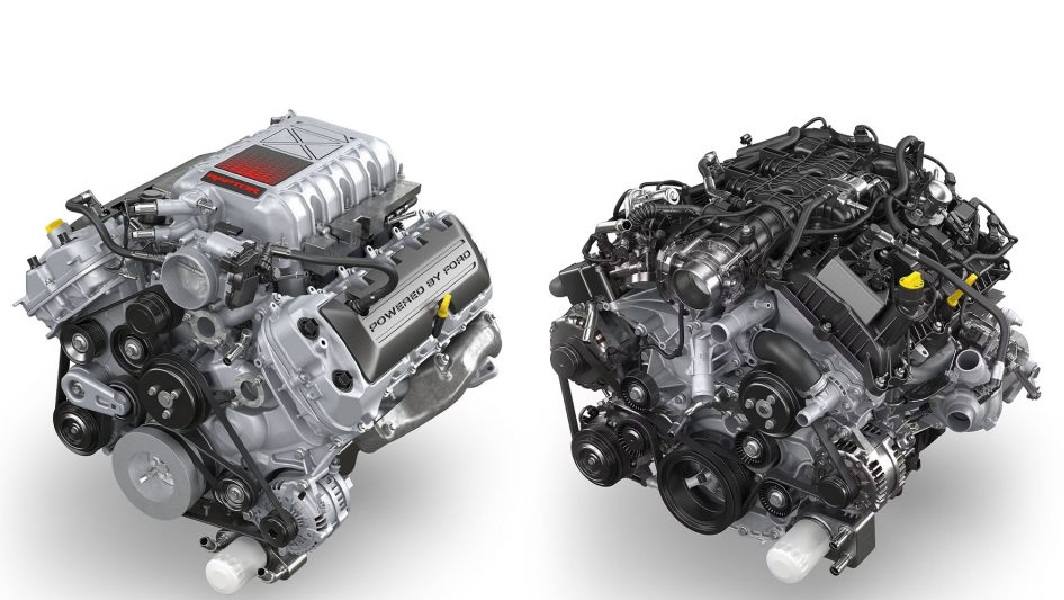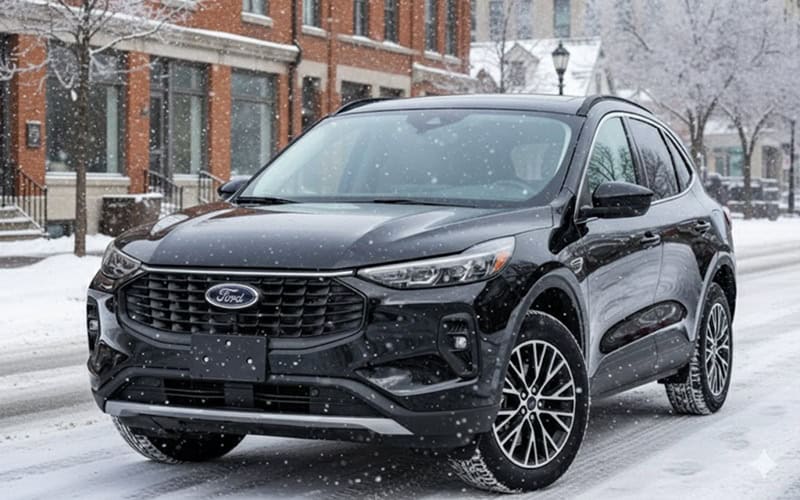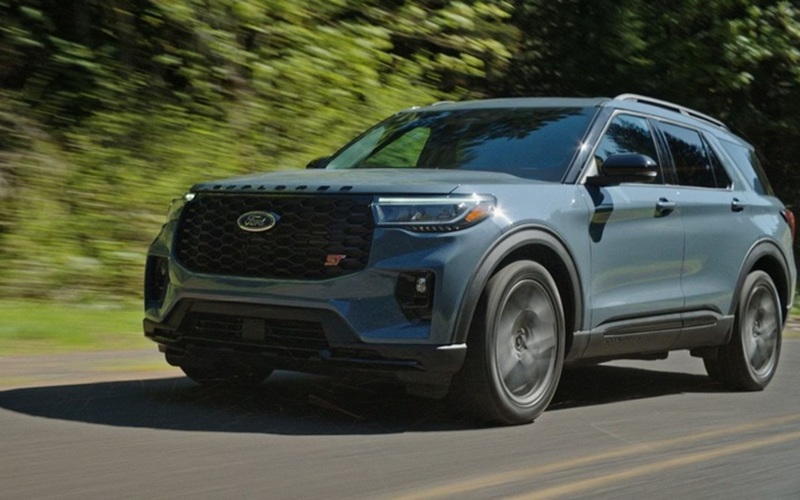What has made the F-150 a continuous best-seller for decades?
The Ford F-150 has dominated the pickup truck market for generations, with its reputation built on a foundation of reliability, versatility, and increasingly powerful engines. From modest beginnings to today’s high-output powerplants, the evolution of F-150 engines tells a fascinating story of automotive innovation and increasing performance demands.

The Early Years: 1980s-1990s
In the 1980s, the seventh-generation F-150 underwent significant changes as Ford began transitioning away from carbureted engines. By 1987, the 5.0L V8 had switched to fuel injection, delivering improved performance and efficiency. This era saw the F-150 offering engines that produced modest power by today’s standards, with the 5.0L V8 generating approximately 135-150 kW (180-200 horsepower).
The eighth-generation F-150 of the early 1990s continued this evolution with refreshed styling and improved powertrains. The 5.8L V8 became a popular option, offering around 150-170 kW (200-230 horsepower). However, a true milestone arrived in 1993 with the introduction of the SVT Lightning, featuring a performance-tuned 5.8L V8 producing an impressive 179 kW (240 horsepower), showcasing a commitment to performance even in pickup trucks.
The Watershed Moment: 1997-2003
The tenth-generation F-150, introduced in 1997, represented a pivotal moment in the truck’s history. This complete redesign brought more refined, consumer-friendly trucks to market, with improved interiors and a more comfortable ride. Engine options continued to evolve, with the high-water mark being the second-generation SVT Lightning that arrived in 1999, featuring a supercharged 5.4L V8 producing nearly 298 kW (400 horsepower) by the end of its production run.
This generation marked the transformation of pickup trucks from purely utilitarian vehicles to versatile family and lifestyle vehicles, with power to match.
Modern Power: 2004-2014
The eleventh and twelfth generations (2004-2014) saw continued advancements in engine technology. The 2004-2008 models offered a range of engines, with the top-tier 5.4L Triton V8 producing around 224 kW (300 horsepower).
A significant shift occurred in 2011 when Ford introduced an entirely new range of engines. The base 3.7L V6 delivered 225 kW (302 horsepower) and 278 Nm of torque, while the 5.0L V8 jumped to 269 kW (360 horsepower). Most notably, this generation introduced the twin-turbocharged 3.5L EcoBoost V6, producing 272 kW (365 horsepower) and 570 Nm of torque, demonstrating that V8 power could come from smaller, more efficient engines.
The Aluminum Revolution: 2015-2020
The thirteenth generation brought perhaps the most dramatic change in F-150 history: an aluminum-intensive body that significantly reduced weight while increasing capability. This bold move was accompanied by increasingly powerful and efficient engines.
The 2.7L EcoBoost V6 offered 242 kW (325 horsepower) and 542 Nm of torque, while the 5.0L V8 produced around 287 kW (385 horsepower). The 3.5L EcoBoost V6 topped the regular lineup with power eventually reaching 298 kW (400 horsepower).
The performance-oriented Raptor variant showcased the true potential of the EcoBoost platform, with its high-output 3.5L twin-turbo V6 generating an impressive 336 kW (450 horsepower) and 691 Nm of torque.
Current Generation: 2021-Present
Today’s fourteenth-generation F-150 continues to push engine performance boundaries. The current lineup begins with the 2.7L EcoBoost V6, which produces 242 kW (325 horsepower) and 542 Nm of torque. The venerable 5.0L V8 now delivers 298 kW (400 horsepower) and 556 Nm of torque, while the standard 3.5L EcoBoost V6 matches the V8’s 298 kW but offers significantly more torque at 678 Nm.
The introduction of the PowerBoost hybrid represents another milestone, combining a 3.5L EcoBoost V6 with an electric motor to produce 321 kW (430 horsepower) and an impressive 773 Nm of torque, all while delivering improved fuel efficiency.
At the extreme end, the Raptor continues with its high-output 3.5L EcoBoost producing 335 kW (450 horsepower), while the Raptor R brings back V8 power with a supercharged 5.2L engine generating a staggering 537 kW (720 horsepower) and 868 Nm of torque.
The Future: Electrification
The F-150 power evolution continues with the all-electric Lightning, featuring dual electric motors producing either 337 kW (452 horsepower) in standard-range models or 433 kW (580 horsepower) in extended-range variants. Both deliver an astounding 1,050 Nm of torque, demonstrating that the F-150 performance journey is far from over.
Five F-150 Engine Facts
- The 1993 SVT Lightning was the first high-performance pickup truck, creating an entirely new segment in the market.
- The current F-150 PowerBoost hybrid can function as a mobile generator, producing up to 7.2 kW of electricity to power tools, appliances, or provide emergency power.
- The aluminum body introduced in 2015 reduced weight by up to 317 kg, allowing for increased payload and towing capabilities.
- The second-generation SVT Lightning (1999-2004) was built on the F-150 heavy-duty chassis to handle the power of its supercharged engine.
- The Raptor R 537 kW (720 horsepower) supercharged V8 makes it more powerful than many exotic supercars.
F-150 Engine FAQ
Which F-150 generation saw the introduction of EcoBoost technology?
These engines were first introduced to the lineup in the 2011 model year, during the twelfth generation.
What is the most powerful factory F-150 ever produced?
The 2023-2025 F-150 Raptor R, with its supercharged 5.2L V8 producing 537 kW (720 horsepower), is the most powerful factory vehicle to date.
How much horsepower does the F-150 PowerBoost hybrid produce?
The hybrid system generates 321 kW (430 horsepower) and 773 Nm of torque.
When did the F-150 first exceed 300 horsepower?
The SVT Lightning reached this milestone in 1999 with its supercharged 5.4L V8 producing approximately 268 kW (360 horsepower), which was later 298 kW (400 horsepower).
Which F-150 engine offers the best balance of power and fuel efficiency?
The 2.7L EcoBoost V6 is the best balance, offering 242 kW (325 horsepower) while delivering reasonable fuel economy of approximately 10.7 L/100km combined.
How does the F-150 Lightning horsepower compare to traditional F-150 models?
This EV pickup truck offers either 337 kW (452 horsepower) or 433 kW (580 horsepower), depending on the battery, making it more powerful than most traditional models.
What was the first F-150 engine to use turbocharging?
The 3.5L EcoBoost V6, introduced in 2011, was the first turbocharged engine offered in this pickup.
How has the power of the base F-150 engine changed over the generations?
The base engine has evolved from approximately 112 kW (150 horsepower) in the 1980s to today’s 2.7L EcoBoost with 242 kW (325 horsepower), representing more than a 100% increase.
Which generation saw the introduction of the high-performance Raptor variant?
The Raptor was first introduced in 2010 during the twelfth generation of the F-150.
How much horsepower does the current 5.0L V8 produce compared to the 5.0L from the 1980s?
The current 5.0L V8 produces 298 kW (400 horsepower), more than double the approximately 135 kW (180 horsepower) of the 5.0L from the 1980s.



